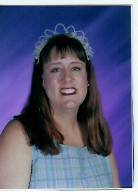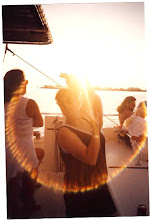
Jenkins, S. (2003). What do you do with a tail like this? Illustrated by Robin Page.
Boston, MA: Houghton Mifflin Company.
Boston, MA: Houghton Mifflin Company.
Book Type/Pages:
Picture/32
Grade Level:
This book could be used for pre-kindergarten to second grade.
Curriculum Links:
This book could be used in science instruction.
Author Credibility:
Steve Jenkins has written many books for children. According to his web site, stevejenkins.com, he states that he wrote this book after noticing how his son, age 5, liked books that asked him a riddle or to answer a question.
Awards:
2004 Caldecott Honor Book
Book Summary:
This is a book about different animal parts and their unique uses. Several animals are showcased on each page by related part and then the use for each is explained in easy to read and understand text. Each section is divided by common body parts such as noses, tails, mouth and more.
National/State Standards:
Science Standards:
Life Science
Illustrations/Graphics:
The illustrations in this book are done in cut-paper collage. Each illustration is bright and colorful and catches the eye. Each group of body parts are done close up and are followed by a two page spread of the entire animal. The collage gives texture to the illustrations and makes them appear as 3D illustrations.
Access Features:
Important access features of this book include an index at the end of the book that gives additional information on each animal. Accompanying the information is a thumbnail size illustration of the animal from the text for easy identification.
Use in My Classroom:
I would use this book in my classroom during a unit on animals. Even though this book is geared for younger readers, I think that older students would still enjoy it. The short text makes it easy to read and would be a welcome addition for lower readers during science instruction. Many times, the level of reading required in science is too difficult for lower readers and they become frustrated. This book would be read by many students in my class regardless of reading level.
My Response to the Book:
I thought this was a great book! There were many things that I learned! I did not know that a skunk will often balance itself on its front paws and spray its enemy over its back. I found myself sharing this book and the information I learned with my husband. This is a must have for my science library.
Related Texts:
Look What Tails Can Do by D.M. Souza
Look What Mouths Can Do by D.M. Souza
Look What Whiskers Can Do by D.M. Souza
Look What Feet Can Do by D.M. Souza



















1 comment:
Did you know Robin Page is Steve Jenkins wife? They collaborate on several books. I wonder if your students would find it interesting to study illustrator/author husband and wife teams? It might be fun to write to them and ask about how they work together.
A husband/wife team that creates their illustrations together are Leo and Diane Dillon--they say their illustrations are done by a third artist--the illustrations are not done by either of them but by both of them, thus the third "person".
Post a Comment